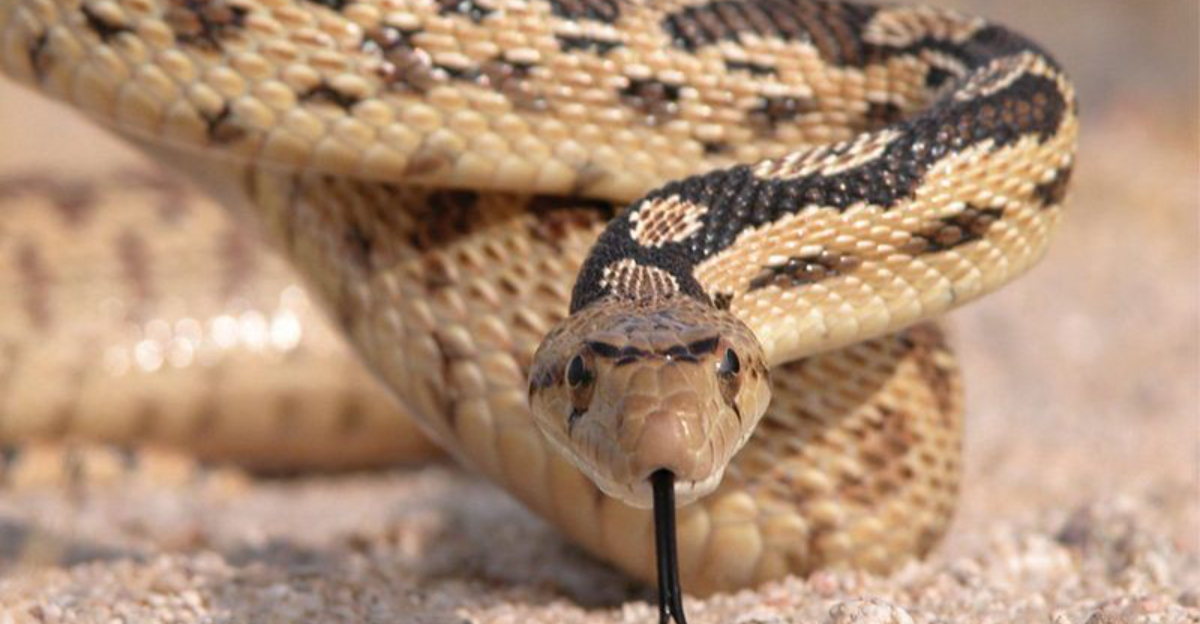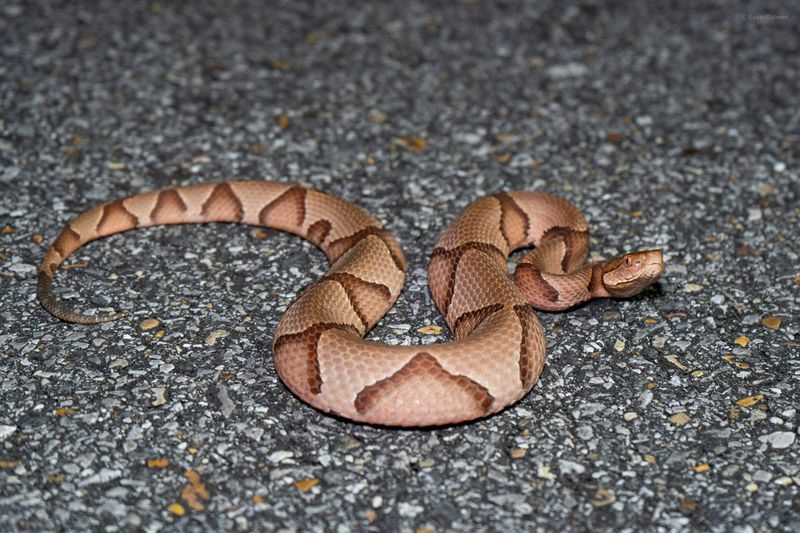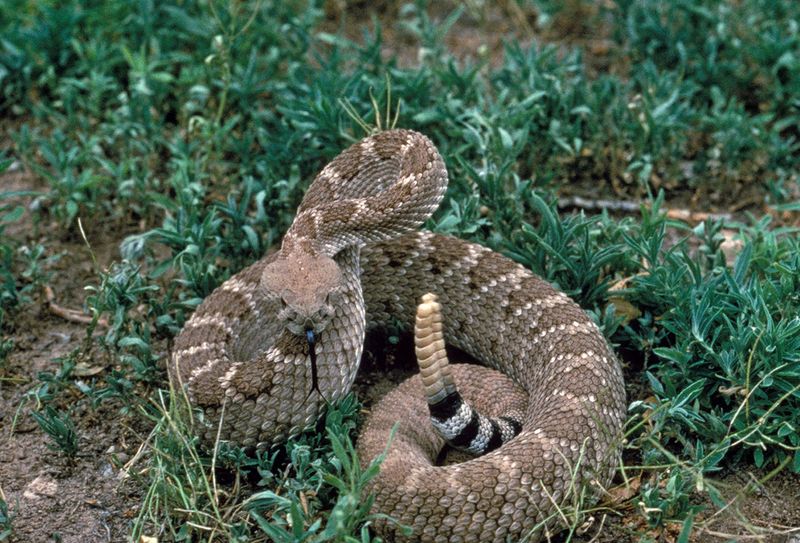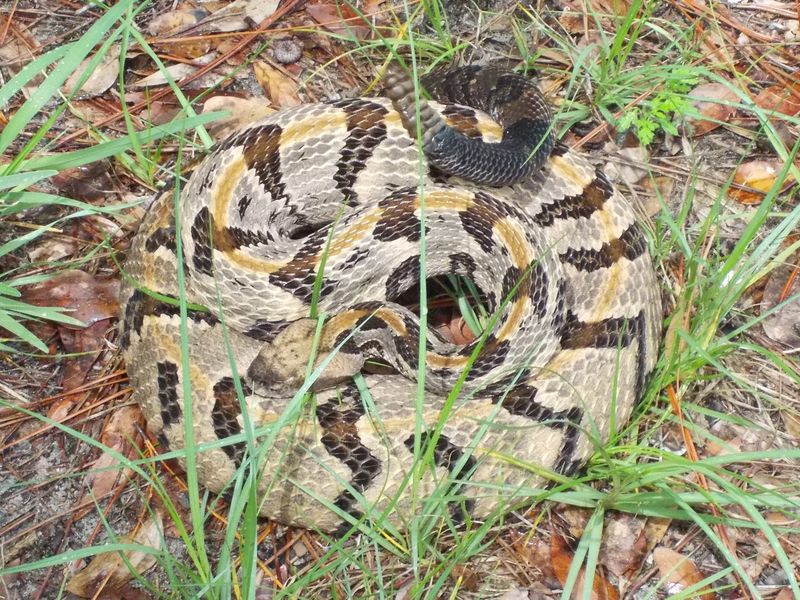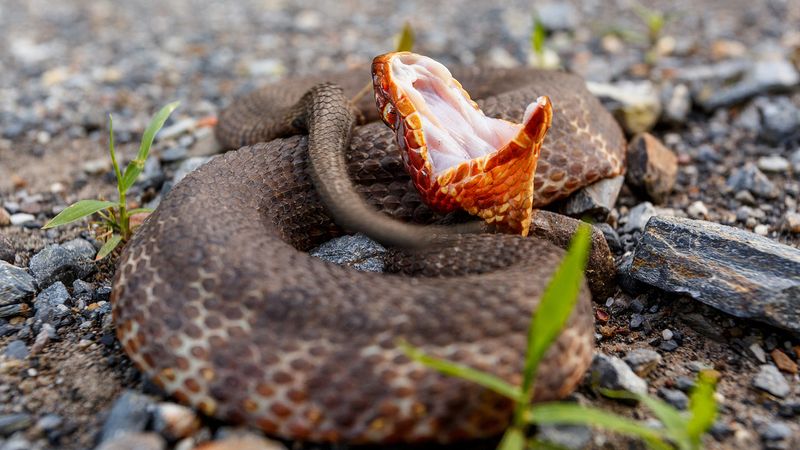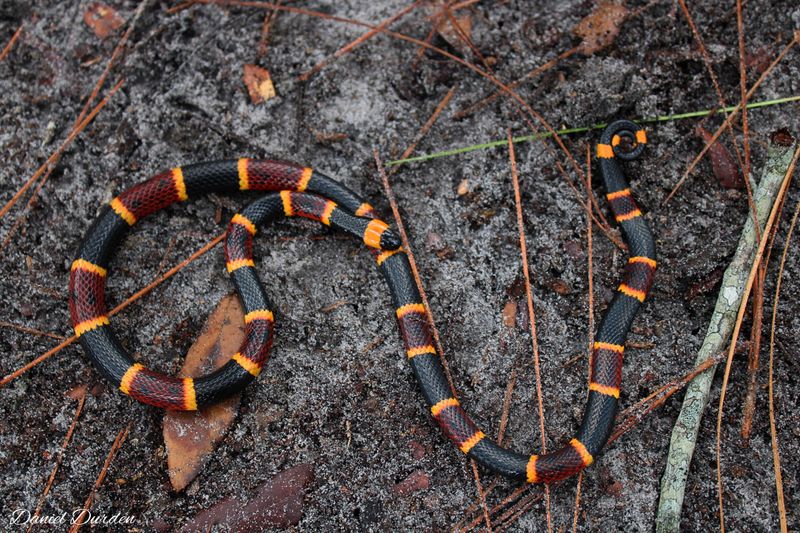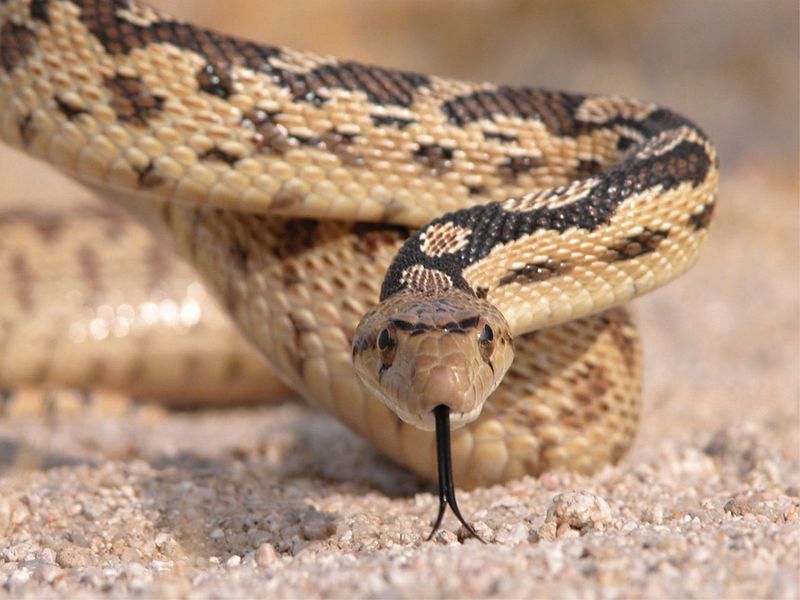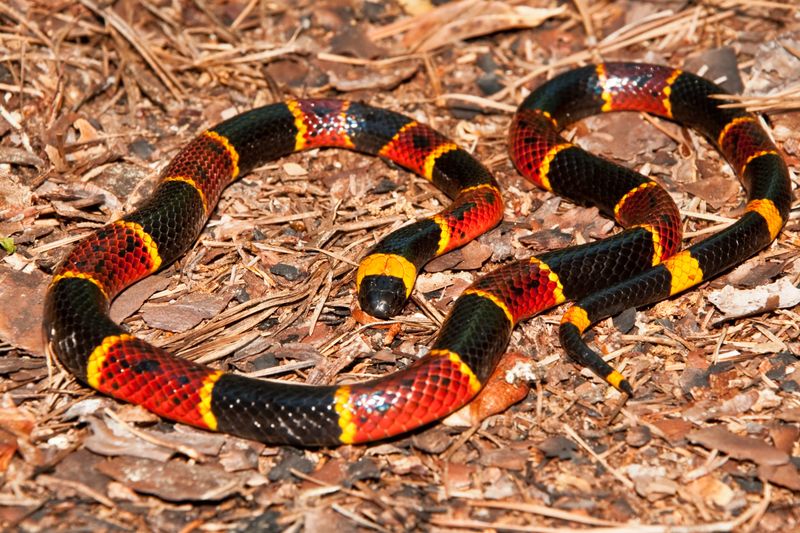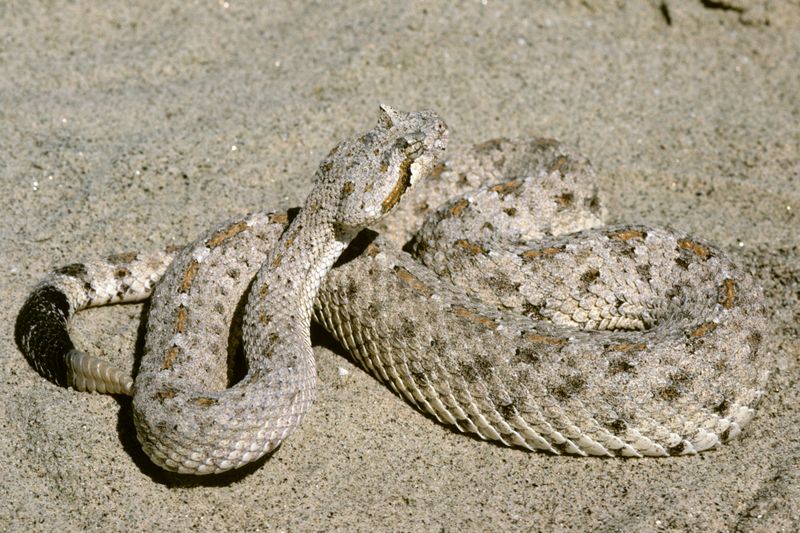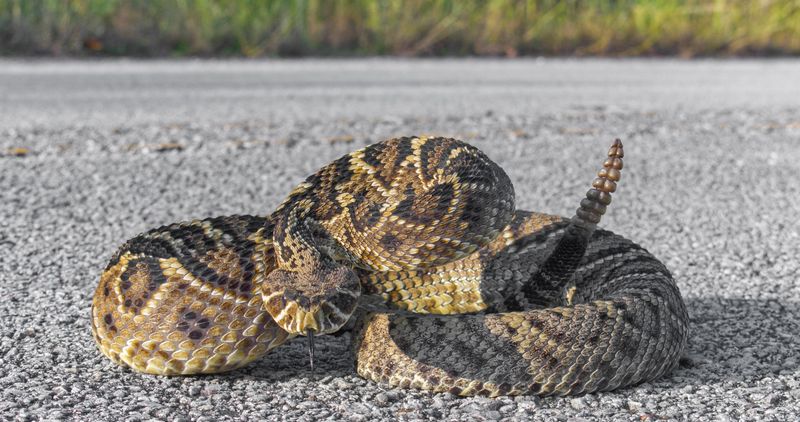Discovering a venomous snake in your yard can be a daunting experience. These creatures, although beneficial for controlling pest populations, can pose significant risks to humans and pets.
Knowing how to identify them and understanding their behavior is crucial for safety. Here, we explore ten venomous snakes you might encounter, providing detailed descriptions, unique traits, and cautionary advice to help you coexist safely.
Whether you’re in the eastern woodlands or the arid deserts, being informed can make all the difference. Let’s take a closer look at these fascinating yet dangerous reptiles.
1. Eastern Copperhead
The Eastern Copperhead is a pit viper found primarily in the eastern and central United States. Known for its distinctive copper-colored head, this snake blends seamlessly into leaf-littered environments. While its venom is relatively mild compared to other venomous snakes, a bite can still cause significant pain and swelling.
Copperheads are generally non-aggressive and will often freeze when encountered. They rely on their camouflage for protection. However, when threatened, they may deliver a warning bite without injecting venom, known as a dry bite.
If bitten, medical attention is recommended, especially for children and pets, to manage symptoms effectively.
2. Western Diamondback Rattlesnake
The Western Diamondback Rattlesnake is a common inhabitant of the southwestern United States. Recognizable by its diamond-shaped patterns along its back, this rattlesnake is known for its aggressive stance when threatened. It uses its loud rattle as a warning signal to deter potential threats.
Its venom is potent and can be life-threatening if left untreated. Immediate medical attention is crucial following a bite, as symptoms can escalate rapidly.
Despite its fearsome reputation, the Western Diamondback plays a vital role in controlling rodent populations. Awareness and caution can prevent unwanted encounters with this striking yet dangerous snake.
3. Timber Rattlesnake
Timber Rattlesnakes are often found in forests and rural backyards across the eastern United States. These rattlesnakes have distinctive dark banding, which helps them blend into wooded environments.
They are relatively docile but possess a powerful venomous bite. When threatened, they may remain coiled and rattle as a warning before striking.
Anyone bitten by a Timber Rattlesnake should seek medical attention immediately, as their venom can cause severe pain and swelling. Ensuring that your yard is clear of potential hiding spots can minimize the likelihood of encounters with these vipers.
4. Cottonmouth (Water Moccasin)
The Cottonmouth, or Water Moccasin, is a semi-aquatic snake prevalent in the southeastern United States. It is easily recognized by its thick, muscular body and the white lining of its mouth, which it displays when threatened.
Cottonmouths are often found near water sources like ponds, marshes, and swamps. They have a venomous bite that can destroy tissue and cause severe pain.
While they’re generally not aggressive, they will defend themselves if provoked. Maintaining a safe distance and avoiding waterlogged areas can reduce the risk of encountering this formidable snake.
5. Eastern Coral Snake
Eastern Coral Snakes are known for their striking red, yellow, and black banding. Found in the southeastern United States, these snakes possess a highly potent neurotoxic venom that affects the nervous system.
Despite their dangerous bite, Eastern Coral Snakes are reclusive and prefer to avoid human contact. Their small, fixed fangs make it challenging to deliver venom without a prolonged bite.
Recognizing their distinctive coloration and remembering the rhyme “red touch yellow, kill a fellow” can aid in identification. If bitten, seek medical assistance immediately, as symptoms may not appear immediately but can be severe.
6. Mojave Rattlesnake
The Mojave Rattlesnake is native to the southwestern United States and is renowned for having one of the most potent venoms among rattlesnakes. This venom combines neurotoxic and hemotoxic effects, making it exceptionally dangerous.
Mojave Rattlesnakes are typically found in desert regions, often near cacti and sandy areas. They are generally more aggressive than other rattlesnakes, especially when cornered.
Prompt medical treatment is essential following a bite, as the symptoms can include difficulty breathing and blood clotting issues. Awareness and respect for their space can help prevent dangerous interactions.
7. Pygmy Rattlesnake
The Pygmy Rattlesnake is a small yet venomous snake found in the southeastern United States. Despite its diminutive size, it is fully capable of delivering a painful bite. Due to its size, it is often mistaken for a non-venomous species.
These snakes typically inhabit wooded areas and are well camouflaged among leaf litter and forest debris. They are less likely to be aggressive, relying on their camouflage to avoid detection.
If bitten, medical attention is necessary to address swelling and pain. Educating oneself and others about their appearance can prevent unnecessary fear and ensure safety.
8. Western Coral Snake
Similar to their eastern cousins, Western Coral Snakes boast vibrant red, yellow, and black bands. Found in the southwestern United States, they possess potent neurotoxic venom but are rarely aggressive.
These snakes prefer dry, sandy environments and are often reclusive, minimizing interactions with humans. Their small mouths make it difficult for them to bite unless mishandled.
Recognizing their distinctive coloration can aid in identification and avoidance. If bitten, immediate medical intervention is critical, as the venom can cause paralysis and respiratory failure. Understanding their habits and habitats fosters coexistence and minimizes risk.
9. Sidewinder Rattlesnake
The Sidewinder Rattlesnake, known for its unique sidewinding motion, is found in desert regions. Its ability to move sideways allows it to traverse hot sandy landscapes efficiently.
This snake has a venomous bite that can cause severe pain and swelling, posing a risk to those who venture into its habitat. It tends to be less aggressive but will defend itself if threatened.
By observing their tracks and being cautious in desert areas, one can avoid encounters. Education about their behavior and environment can facilitate safer outdoor experiences in their territory.
10. Eastern Diamondback Rattlesnake
The Eastern Diamondback Rattlesnake is the largest rattlesnake species in the United States, found predominantly in the southeastern states. Its imposing size and distinctive diamond pattern make it easily identifiable.
This snake’s bite is highly venomous, capable of causing severe damage or even death if untreated. Despite their size, they are generally non-aggressive unless provoked.
Being vigilant and respecting their space in wooded or grassy areas can prevent dangerous encounters. Prompt medical treatment following a bite is crucial for survival. Understanding their role in the ecosystem highlights the importance of coexistence.
